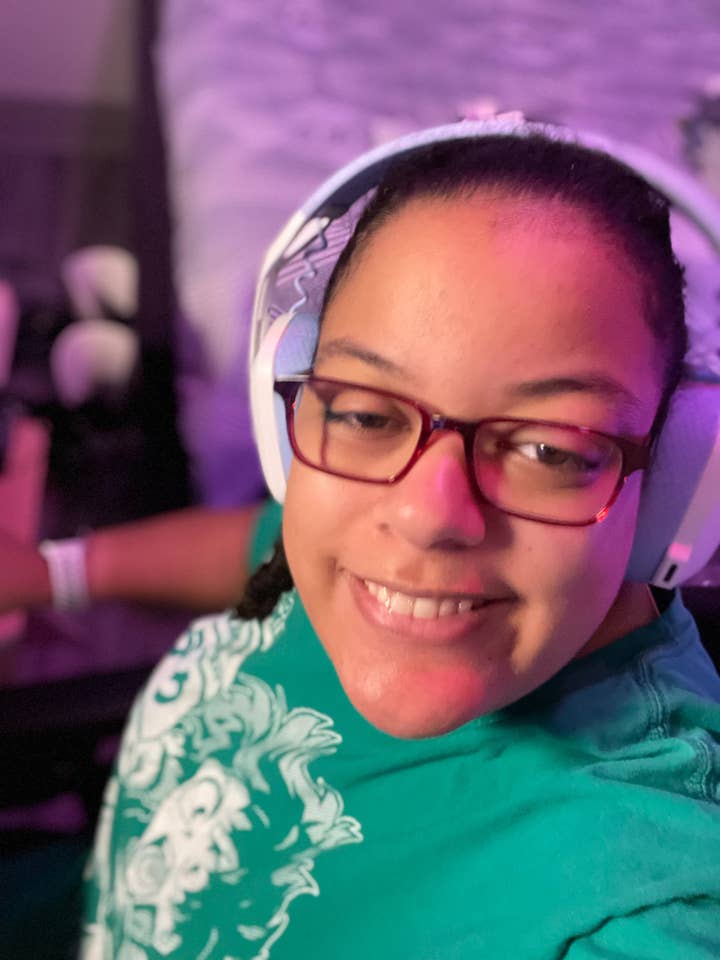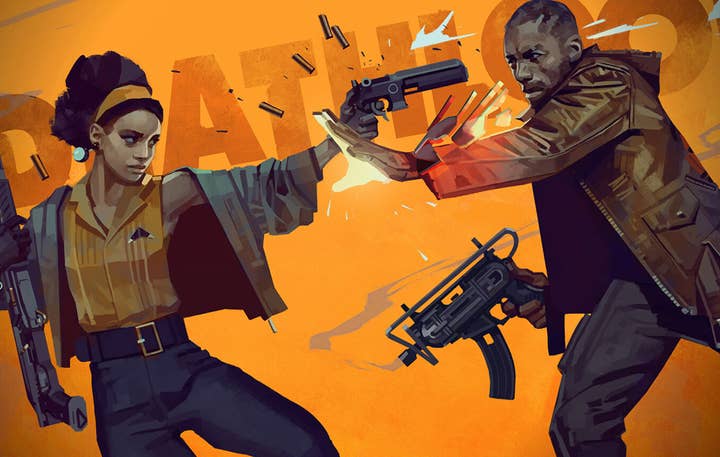"Accessibility doesn't hamper a vision, it enhances creativity"
Accessibility specialists discuss their quest for inclusive design, and accessibility not being rocket science
Accessibility is a relatively recent topic of discussion in the games industry, but one that's become more and more prominent.
The efforts of a handful of pioneers such as Xbox and Naughty Dog have paved the way for more studios to make their games more accessible to more players.
Whether it's Team17 making a point in showing its accessibility options in a dedicated Overcooked trailer, Ubisoft's increasingly inclusive approach in its latest Assassin's Creed entries, or Insomniac Games making accessibility an integral part of its recent releases, the industry has come a long way.
But every so often, a game dominates the headlines for exactly the opposite reasons, whether that's CD Projekt Red's Cyberpunk 2077, Bend Studio's Days Gone -- which patched in some options three months after release -- or the Spyro Reignited Trilogy, which didn't have subtitles at launch.
The latest game to be in the spotlight for its lack of accessibility is Arkane Lyon's Deathloop. While being critically praised in the mainstream games press, every review focusing on accessibility led to the same conclusion: Deathloop doesn't include the bare minimum that would make it accessible to disabled players.
"To feel that over and over and over again, you start to get the feeling: why do I even try? Is anyone listening to my needs?"Courtney Craven, Can I Play That
In her review, content creator Kennedie 'Dynamic Reactions' Griggs highlighted issues with the auto-aim features, among others. While Deathloop offers two types of aim assist, which you can combine, neither of them work the way you'd expect and therefore do little for accessibility.
The issues highlighted were often the same across reviews, whether from Can I Play That's founder and director of operations, Courtney Craven, or accessibility consultant, content creator and producer Steve Saylor. This includes issues with the text size, with the way you mark enemies, low contrast, limited lives, audio issues, no option to remap the controls on PS5, and more, making it very difficult for disabled players to play and enjoy, let alone finish, Arkane's game.
"There's a lot that's built into the design of the game that does make it difficult for accessibility," Saylor tells GamesIndustry.biz. "Mainly in regards to basically the trappings of a first-person shooter, where you have to be very precise with your aiming and be able to see enemies really quickly in order to either stealthily move around them or take them out."
Craven recalls a similar controversy around Returnal's accessibility earlier this year. However, they point out that Returnal was clearly marketed as being a game where the difficulty was the whole point, unlike Deathloop.
"If you don't go into the game expecting to die over and over and over again, you're going to feel defeated," they say. "It wasn't part of the gameplay that was marketed that it's supposed to be hard. And it just doesn't feel like that's part of the core gameplay as it is with Returnal."

This lack of accessibility could hypothetically keep billions of people from being able to play, Craven continues.
"Just in the US, it's millions of people who can't play the game because the subtitles don't quite work or because there's no controller remapping on console. Then the deeper issue with a big game launching like that, that proves to be so inaccessible with so many people, is that it leaves you feeling down about the whole industry, not being able to take part in the hype of the game. This was a huge anticipated game. To feel that over and over and over again, you start to get the feeling: why do I even try? Or is anyone listening to my needs? So it has that twofold effect: you're walled off from the game, and you feel defeated about it."
"There are a lot of disabled players who rely on games to have that social interaction with people, and it's a really big part of their lives"Stacey Jenkins
Stacey Jenkins, games accessibility specialist and content creator, emphasises the very real social impact of not being able to play with your friends and participate in those conversations when a big game comes out.
"There are a lot of disabled players who rely on games to have that social interaction with people, and it's a really big part of their lives," she says. "I became disabled about eight years ago and I was pretty much housebound, and that's when I started streaming on Twitch because I was like: I need to talk to people."
Jenkins calls on storefronts to start hosting information about accessibility features on game store pages as well, saying it would cut down on the burden of disabled players jumping through hoops to return games after learning of their hostile design decisions only after purchase.
Seeing beyond accessibility options
Saylor points out that whenever the industry talks about accessibility, people generally think of the amount of options that are available to a game. But there is (way) more to it.
"Obviously with the Last of Us Part 2 [having] over 60+ options, that's [what] people are seeing as the standard of accessibility moving forward," he says. "But in reality accessibility has to be part of the design process.
"With Deathloop, [accessibility] wasn't part of the design. We'll use the example of the three lives that you have in the game to complete a run. When that idea comes up, you [should] start to think: how can we make this available, or at least accessible, to as many players as possible regardless of their ability? That's when you can start to be a little bit creative so that hopefully that idea can still make it through that design phase, and still be accessible.
"It's not knocking Arkane for ignoring accessibility, it's just that right now developers are not thinking accessibility in that way"Steve Saylor
"And unfortunately Deathloop didn't do that. It's not knocking Arkane for ignoring accessibility, it's just that right now developers are not thinking accessibility in that particular way."
Accessibility has to be a consideration throughout the development journey and be built alongside the game, rather than be about "slapping a bunch of options in there, which essentially are Band-Aids into the experience itself," Saylor continues.
Both Saylor and Craven agree that Naughty Dog's The Last of Us Part 2 did exceptionally well in giving players the ability to customise their experience, but the message they want to convey in view of the Deathloop controversy is that this type of work has to be done in conjunction with accessible design.
"I would say don't strive to be like The Last of Us Part 2," Craven says, acknowledging that this might be a controversial opinion. "It was an amazing game and it was definitely a benchmark for the industry in terms of allowing disabled people to play, but I would say the best thing to do would be to strive to be like games that are inclusive without all of the robust accessibility options, like Ghost of Tsushima, Assassin's Creed Odyssey, or even Watch Dogs Legion. They did a lot of stuff right.
"Watch Dogs Legion's GPS navigation was really good [with] the ability to ping and see enemies and just have that extra help guiding your way around a level or to get to your quest. And then in Assassin's Creed Odyssey, the eagle was very helpful. You can tag enemies, you can search an area for various things, and again that wasn't designed as an accessibility option that was marketed just for disabled people. It was part of the core gameplay, so it was thoughtfully designed and part of a system to make the game playable for everyone and it served accessibility."

When Saylor posted his Deathloop review and explained his issues with the three lives system, some people suggested that Arkane could just increase the number of lives in a patch later down the line, or include a god mode. But he argues that you can't fix what's a core part of the game's design.
"I don't want Arkane to be adding that into the game because that would fundamentally change the way the game is playing for everyone. If you completed the game and then all of a sudden they add in that you can have five lives instead of three, that just can frustrate players.
"That fundamentally changes the vision of the game. Then people say: developers shouldn't have to change their vision for accessibility. If you're able to think about it earlier on, then that's a vision that I would support. Accessibility doesn't hamper a vision, it actually enhances creativity. I want this game to succeed, I don't want them to fundamentally change how the game is played just to be able to add in accessibility that should have been thought of in the design process."
Jenkins agrees that tacking on options doesn't necessarily fix the problems.
"We're seeing a lot of those reactive type of things being added into games that are already partway through the development process, but when accessibility is brought on at the beginning of the project, something that we can build in every step of the way, that's going to make a huge difference to the game."
The barriers to accessibility as a norm
Deathloop is far from the first AAA game to create a controversy around its accessibility options, and it unfortunately seems unlikely to be the last.
"But when Naughty Dog came out with The Last of Us, [it] gave us as disabled people permission to go: there's no excuse now," Griggs says. "You have to do this now. Look at what they did, we can do this. Somebody else out here cares, and so we should advocate just a little bit more for ourselves and be a little bit louder. Getting together and sharing that knowledge would help a lot."
Craven concurs that the main barrier preventing accessibility from becoming a norm in games is simply that people don't know.
"When Naughty Dog came out with The Last of Us, [it] gave us as disabled people permission to go: there's no excuse now"Kennedie Griggs
"It's easy to think, if you're active in the accessibility community or you're connected to it in some way, that this is something that obviously everybody knows about. But it's really not. It's still, in the grand scheme of game development, a small area of it. It's not really something that most studios have a team dedicated to, like Ubisoft does, like Square Enix does.
"And even at studios that do have people, it's still a super-small team trying to fix everything. And there's only so much work that one person can do or two people can do. And then there's all the other other issues in game development: budget, time, what's the priority of it? And there's always that return on investment that you tend to get a lot of pushback from, people that don't really know a whole lot about accessibility or how many people there are that benefit from it, and they think that it's not worth the investment."
Jenkins adds that most AAA games take several years to make, meaning the impact of this recent wave of awareness towards accessibility should bear its fruits in a few years.
"Some games may have been too far in development for meaningful changes to be made, so I think in the next three to five years, we're hopefully going to see a really big change and a big impact," she says. "I do think the awareness and the publicity around accessibility is good because it's hopefully helping people in studios get buy-in because execs know that it's the right thing to do, it's good PR. But how to do it -- and how to get to the stage of accessibility maturity that you want to be -- is the more tricky bit, and it's still being figured out."
How to approach accessibility
Saylor highlights that there are three kinds of disabilities:
- Permanent, which is for instance being blind from birth or an incident happens where you do become disabled and that's a permanent thing for the rest of your life.
- Temporary, say if you break your arm and it's difficult to use your right or left hand.
- Situational, for instance you just had a baby and you want to get the baby to sleep but you want to still be able play games without disturbing them so you have to turn off all audio.

"It really comes down to you, as an industry, to relearn how to design around players that want to still have a challenge, but also don't want to have to fight their own barriers to play," he says. "There are certain aspects where accessibility helps everyone, but right now we're still trying to learn what is the best way to go about it, studios are trying to figure it out, and not one studio is doing it absolutely perfectly. The Last of Us 2 is sort of considered the most accessible game that we currently have right now, but there are definitely players that still can't play it. I have a friend of mine who, because he can't hold a PlayStation controller, he can't play the game."
The main piece of advice from our interviewees is to think about accessibility from the very beginning, from the top down, and bring in consultants with different disabilities throughout the process. If you have the resources, create an accessibility team in your studio.
Being receptive to feedback, taking care in listening to disabled players and processing their feedback is also crucial.
"Ubisoft's accessibility department is so good," Griggs says. "I would genuinely email them and be like: hey, are you guys looking for accessibility notes on this game or that other? And they'll be like: go ahead and send it over. Or I'll talk about a problem and they'll be like: do you want to talk about it? It's just getting down on that level of actually talking with disabled people and seeing what we need, and how they can implement it.
"Because if you really talk to disabled people, it's not rocket science. We will tell you: these are the things that we cannot do, and here's an idea of how to fix it. Because it's kind of hardwired with the way that society is, that if we see something that we cannot do, we're automatically thinking: how can I get around to adapt to this situation?

"And if developers were to talk to disabled people and really use that to help them think outside the box, that's a tool in itself. That's how breakthroughs are made."
Jenkins says the four most commonly complained about issues are control remapping, text size, colorblindness and subtitles presentation. Providing separate volume controls for effects, speech and background music is also crucial.
"So if you can nail all of those then you'll be making a good dent," she continues. "Control remapping is going to help people who need to change things up, maybe they're playing with one hand, or maybe they've got tremors or weakness in their hands."
Griggs, who has cerebral palsy, points out that it's important for the reconfiguration to be available inside the game.
"A lot of people aren't really adding button remapping to the PS5 anymore because you can go in the PS5 natively [to do it]," she explains. "But I want to go in the game and change them on the fly, because really the button remapping changes depending on the game that you're playing.
"I also really want a target lock and I will aim [for it] to become a normal thing because that's the main issue for me in games. Just let me lock on a target so I can hit it. In my perfect world that would generally be bare minimum. Very descriptive subtitles, good haptic feedback -- which with the PS5 we're heading towards -- button reconfigurations, good target lock, some good camera controls. It generally covers everybody's bases."

Jenkins points out that while we're starting to see the option to resize subtitles more commonly, a lot of the time developers don't give the option to increase the size of any of the other fonts on screen, such as mission tags or menu texts, which is an issue.
"If you have subtitles, make it so you can have a background on them," she adds. "If you want to go a step further, then be able to have the background opacity change so it's transparent or solid. Also caption the environmental sounds -- so gunshots and all the spooky noises like growling and stuff like that."
She points to Ubisoft's research which showed that 95% of Assassin's Creed Odyssey players kept subtitles on. The option was enabled by default, after the company noticed that 60% of players eventually went into the option screen to turn them on in the previous entry, Assassin's Creed Origins.
"It kind of goes to show that accessibility doesn't just benefit a small group of people, it benefits everyone," Jenkins continues. "We're an aging population as well -- I think the average age of a gamer is something like 35, we're only getting older, and I don't know about you but I want to be able to continue playing until I'm old and gray. Even though we're designing perhaps for people with disabilities, we're actually extending it to a lot more people, and just helping everyone play games.
"I think a lot of the time we're asking the wrong questions: how many people are colourblind? Or what percentage of people in the world are deaf? That's not the right question. The question that you want to ask is how many people use subtitles? How many people use those features? Because that's a lot more helpful and it's going to be a lot more interesting."

She adds that developers should be looking at resources around other types of accessibility as well such as web accessibility, as there's just a lot that you can learn from other industries.
Craven adds that, of course, not all options help all people, and advises developers to attempt to put themselves in a disabled player's shoes.
"Start playing your game, go through the options menu and, even in the options menu, see how long it takes, thinking as a deaf player, a person with low vision, or someone who uses an eye tracker," they say. "If you put yourself in that mindset, how many barriers are being presented just in your options menu? How much freedom do I have to customise the game experience that I have?
"And then speak with and work with disabled consultants to get their opinions -- because you can put yourself in the mindset all you want, you're still not going to answer every question, you're not going to have really an accurate representation of someone else's experience in your game."
Concluding our chat, we ask Craven whether there's something the industry can do to encourage more accessibility.
"I know this will be a polarising opinion, but I think that things like subtitle size options and controller remapping should be part of certification for games," they say. "Because those are the most basic things: colourblind options, controller remapping and subtitle options. Not just subtitles being present -- if they're present but they're poorly done, they're not going to help anybody.
"They should be three core things that are required to publish your game on a certain platform, and I would like to see that become something like the ESBR that does age ratings.
"And then just further advocacy within the game development community. It is becoming more of a thing, we are becoming more visible, those of us that do the work, but I think it takes time to grow and recognise [issues]. So just listen to people and give them the microphone if you don't really have something to say on the matter yourself."
Resources:
- AbleGamers courses
- A11yto.com
- A11ytalks.com
- Can I Play That
- Deque.com/axe-con
- 'Don't Make Me Think', by Steve Krug
- GA Conference
- Game Accessibility Guidelines
- 'Inclusive Design for a Digital World', by Regine Gilbert
- Microsoft's Ability Summit
- 'Mismatch: How Inclusion Shapes Design', by Kat Holmes
- UX=Accessibility & Accessibility=UX
- Xbox accessibility guidelines

